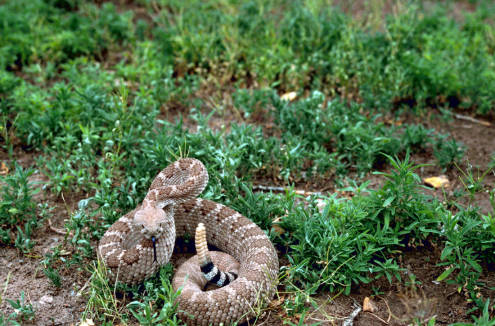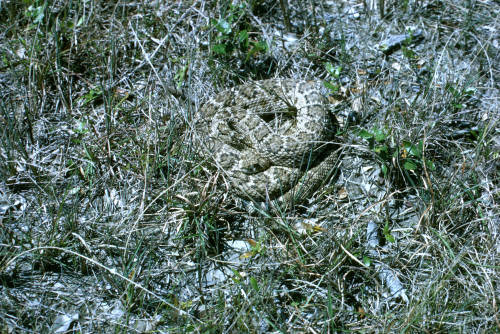Eastern Diamondback Rattlesnake: (Crotalus adamanteus)
The eastern diamondback rattlesnake belongs to the crotalinae family, better known as pit vipers. The eastern diamondback rattlesnake averages in size between 36 to 72 inches long, with the record being 96 inches long.
Eastern diamondback rattlesnakes are heavy – bodied. Their head is triangular shaped and broad, it also has diagonal lines on the sides of its face. Their color patterns consist of a brownish, brownish – yellow, brownish – gray, or olive colored, overlaid with a series of dark brown to black diamonds. Their belly is a yellowish or cream color, with diffused dark mottling along the sides.
Eastern diamondback rattlesnakes are found throughout the state of Florida, including the Keys. They inhabit areas such as pine and oak woods, palmetto stands and grassy fields.
Eastern diamondback rattlesnakes are carnivores, meaning they only consume meat and primarily consume rodents, squirrels, small birds, rabbits and other small animals.
Eastern diamondback rattlesnakes are not exclusively nocturnal. They spend most of their time hiding under debris, waiting to ambush its prey. It is also one of Florida’s largest and extremely dangerous native snake. When diamondbacks are provoked they begin to coil up into its defensive position, raising its neck and head in the air just above its body, rattling its tail, ready to strike repeatedly releasing its venom into its victim. Diamondbacks can strike from any direction at any time, they do not have to be coiled to strike. They also have a striking distance that ranges from 2/3 to 1/2 of their body length. Their venom is haemotoxic, which causes damage to the red blood cells and the walls of the blood vessels. If you are ever bitten by a diamondback rattlesnake seek immediate medical attention.

